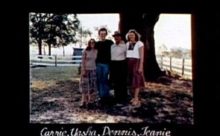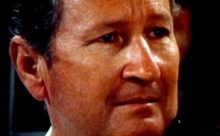The Filming of Les Blues de Balfa & Cajun Visits
By Yasha Aginsky
The first time Carrie and I met Dewey, Rodney, Ann and Tony Balfa was while we were filming Mike Seeger and Alice Gerrard for our film HOMEMADE AMERICAN MUSIC. Shooting in 16mm with my pals cameraman Stephen Lighthill and soundman Nelson Stoll, the living room jam at the beginning and end of Les Blues de Balfa was one of the musical high points of my life, thanks to the participation of so many great musicians, many of whom have gone on to become friends. It was at the Blackpoint Festival of Traditional Music near San Rafael, California in 1978, where Dewey, Rodney and us had time to hang out and get to know each other. I was immediately attracted not only to their soulful music, but also to the warmth and ease of their personalities. In his colorful Cajun French, Dewey welcomed our interest in his music and insisted that we come visit him at home in Basile, southwestern Louisiana. Eager to discover a French-speaking region in America, we accepted and instantly formed a plan to pack up our two young boys in an old Dodge van and head south on our way to do some more filming with Mike and Alice and their mentors in the spring.
Before we could hit the road on our great adventure, tragedy struck the Balfa Family. On a highway off-ramp in a windy and wet February storm, a big-rig jackknifed and crushed Will and Rodney in their car as they drove to a gig. By the time we got there in late April 1979, the whole family was just getting back on its feet. Dewey and his wife Hilda had us camp on their land, and friends Tracy and Eloise Schwarz were staying in their house, along with the youngest Balfa daughter, Christine, who was 10 at the time. We did some filming of Dewey in his furniture store and around his house, but it was mainly a time for getting to know each other and the area, while the family grieved. We especially grew close to Hilda Balfa, a most caring and good-hearted woman. The next summer, she too had died from eating bad pork, and by the time we returned in the spring of 1981 with our friends Ken Keppeler and Jeanie McLerie of the group Bayou Seco from New Mexico, the Balfa Family had begun to disperse. We stayed in Raymond François’ family house in Eunice, and we visited with and filmed some of the other musicians in the area who had been important in the growing popularity of traditional Cajun music, all friends of Dewey and of Ken and Jeanie: Denis McGee, Wallace “Cheese” Read, Canray Fontenot, Leopold François, a young Robert Jardell and Raymond François.
Ken and Jeanie had lived and worked in the area during the 70’s, while they were soaking up the music. Ken worked with Mark Savoy in his music store and Jeanie taught violin and played in Michael Doucet’s group Beausoleil. They had developed friendships with the local musicians and were key to us meeting and being able to film with such ease and complicity. The first night we all arrived, Cheese Read was playing a private party and invited us to come join in. Jeanie appears in the sequences with Denis McGee and Cheese Read, and you can hear her distinctive voice in some others. While I filmed and directed and Carrie recorded sound, we were lucky to also have the camerawork of our Quebecois buddy filmmaker Bruno Carrière, who joined us for most of our stay. Raymond François was a most generous and cheerful host, who helped us out whenever he could get away from his teaching job in Lafayette. He appears in the scene with his dad, Leopold, in Cajun Visits and jamming with Dewey and the Cajun Playboys near the end of Les Blues de Balfa.
Why the two movies? Funded by grants from NEA Folk Arts and the Louisiana Arts Council and the contributions of all the folks mentioned above and more, I had really set out to make one movie about the survival of traditional Cajun music through the oral transmission in one family, the Balfas. As the family suffered one tragedy upon another, it became clear that with great discretion, that story had to be told. The story of the Balfa Brothers and Dewey’s decision to go on playing became the central theme of Les Blues de Balfa. The visits with the other Cajun musicians would have to have a separate film more focused around the different styles and stories of each player, and that became Cajun Visits.
I am really very happy with both, and they each have a deep place in my heart. I hope that they have introduced a lot of viewers to Cajun music and culture. Barry Jean Anselet, a respected scholar and critic of work done on the Cajun culture, lauded the sensitivity of the films and the quality of the music and musical recordings, writing in the journal of American Folklore (July, 1984) that it was “some of the best I’ve ever heard.” I do too.
--Yasha Aginsky, San Francisco, July 9, 2009

